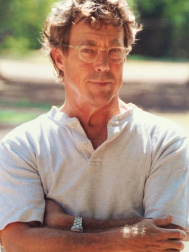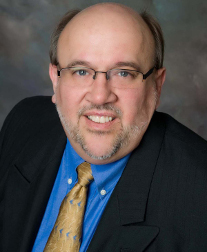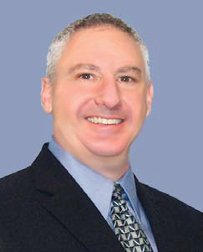SIs: What to Look for at the NAB Show
ALEXANDRIA, VA.—In an era when the pace of technical change seems to be hyper charged, systems integrators (SI) are a valuable resource for broadcasters and others who need to implement challenging video projects. A good SI keeps up with the equipment that is available, and can create a system design that meets today’s needs while allowing a fair degree of future proofing.
An SI team serves as a bridge between end users and vendors, and trade shows like the NAB Show are awash in meetings.
So what are the hot topics this year?
EARLY DAYS FOR LIVE IP PRODUCTION
Less than a decade ago, SIs were helping broadcasters bring file-based production in to their facilities—today, that part of the long march to a fully IP facility is largely done. But the industry still has many SDI islands.
At the NAB Show, more than a few competing camps have agreed on the best way to transition the live production world from SDI to IP, and end users and the SIs that support them are trying to figure out the best way forward.
Austin, Texas-based Beck TV has served a variety of clients over its more than 30 years in the industry, including call letter stations, 24-hour news facilities, cable origination facilities, production facilities for cable channels, sports venues and more.

Fred Beck
The professional video industry's #1 source for news, trends and product and tech information. Sign up below.
According Fred Beck, president of Beck TV, his company has two proposals out right now where clients have requested both an IP solution and a more traditional architecture.
“They want our opinions on each approach,” he said. “They’re looking at how much IP would cost them and where it stands, and what I told them was: ‘It’s still very early, we don’t have standards yet.’
“We’re seeing a lot of gateways that take HD-SDI and put some wrappers on it, then stick it in to a switcher,” he added. “We still need standards but it’s doable… if you’re building a television facility and you’re looking at 20-30 years overall for your facility and maybe 10 years for your infrastructure, you have to look at IP.”

Michael "Spike" Jones
Michael ‘Spike’ Jones, vice president, sales and marketing for Communications Engineering, Inc., (CEI) in Newington, Va., said that for their customers, one link of the chain that has pretty much completed its IP transition is master control. “Over the last year we have moved to almost exclusively producing IP-based MC systems,” he said.
As far as the live production transition goes, Jones said the technology is nascent, and urged a cautious approach.
“Some places like news production are aggressively leveraging IP transport, and that’s growing like a weed,” said Jones. “In studio production it’s not coming quite as fast, but in every single design it’s a consideration right from the beginning. It’s less about making a decision now; it’s when and how will IP serve the customer better down the road… that’s the expertise that system integrators are counted on to deliver.”

John Wesley Nash
John Wesley Nash, executive vice president and chief operating officer of CEI, said that to an extent, it’s not a question of whether to go IP in live production, but when, and how to prepare today.
“(For) all of our projects of any significant nature over the last 18-24 months, the whole question of examining where IP fits in currently and in the future has been a major consideration,” Nash said. “We are very IP-centric from the standpoint of proving that it belongs in a project today or doesn’t, or to what degree we integrate it today to make it easy to integrate in the future.” He added that a key consideration was the lifecycle of the project.
One part of the IP transition that has made significant advances since last year’s NAB Show is audio over IP. Nash said that the AES67 AoIP standard has developed a lot over the last year and is now becoming commonplace.
“Last year manufacturers were just starting to integrate Dante and RAVENNA in to products in many cases, and now [these are] in almost every project,” he said. “IP audio standards have come together and there’s more and more plug-and-play between manufacturers.”
Joseph Policastro, director of project management & planning for Broadcast Integration Services in Union City, N.J., said that while IP will continue to dominate new work in much of the broadcast chain, it’s just starting to make an impact on router and production switcher installations.
“We’re in the infancy stage,” said Policastro. “Everyone is concerned about picking the right equipment to not put themselves in a bad position when it all shakes out in two or three years.”
One product area that Policastro sees as becoming more and more common over the next year or two are virtual sets and augmented reality systems. “These will become standard for more clients,” he said “In a few years, having a VR or AR system might be like having a CG system today.”
Policastro also expects to see more digital cinema-related topics at the show. “4K cameras are being used in the field for commercials, but they can also drop frame rates and be used in studios,” he said. “There seems to be this cross-pollination of directors and producers who are asking ‘why can’t I use this camera in my regular production.’”
BIS is currently designing a hybrid television studio for a midwest PR agency that will use digital cinema cameras along with traditional video switchers to do 4K and UHD production in a standard facility.
Policastro added that BIS is getting steady feedback from clients that want equipment and facilities that are 4K-ready.
Policastro thinks that the term “cloud” is often misunderstood. “The word ‘cloud’ is thrown around as something that allows more than it does in many cases,” he said. “It is not a finished full thought, [but] we are just in the beginning of making it a driving force.”
VIDEO EVERYWHERE
One positive trend that goes beyond any specific technology area is the simple expansion of video in to just about everything. CEI, for example, started off as a broadcast-specific SI, but the company’s services have grown to include a number of high-end AV projects for customers such as financial institutions and medical institutes.
“Video, audio and media/IT technologies are showing up in so many businesses,” said CEI’s Nash. “The expertise that we sell is now broadly useful across a wide range of businesses and industries.”
BIS’ Policastro echoed these thoughts, saying that the same traits that drive an SI’s business in the broadcast world are now helping with new clients in the educational and corporate field.
“When a corporate client says ‘we’d like a TV studio’ and ‘we’d like to be able to get the video to these three branches… and distribute graphics,’ we see these as common [broadcast] network problems where procedures, standards and asset management matter.”
This cross pollination is driving business, according to Policastro. “Only a couple of years ago ‘college work’ for an SI meant AV systems for the auditorium and other managed pockets of work,” said Policastro. “A couple of years ago a college would not have been streaming, but places like that are now having many of the same challenges broadcasters have had for years.”
BIS recently installed a TV studio for a company that makes forms for insurance purposes. “They needed a studio because they needed to do web seminars,” he said. “They needed to educate their clients on what they were doing, they needed a media presence.”
Noting the growing importance of “non-broadcast” work, Beck noted that his firm has certainly started to see more facilities that need to deal with delivery over the internet, mobile or OTT. One big recent project was a facility for Time Inc. in Manhattan. “It’s four studios, three control rooms, and it’s all about creating content for the web,” he said.

Mark Siegel
Advanced Broadcast Solutions of SeaTac, Wash., recently installed a new video production facility for the Digital Media Program at Bates Technical College, a public college based in Tacoma, Wash. Mark Siegel, president of ABS, said that Bates wanted to make the most out of the upgrade opportunity.
“The new workspaces accommodate a full class of students,” he said. “We also installed fluorescent and LED lights in the studio to support their ‘green’ initiative, and included high-quality components in the control room so students and outside clients can achieve professional results.”

